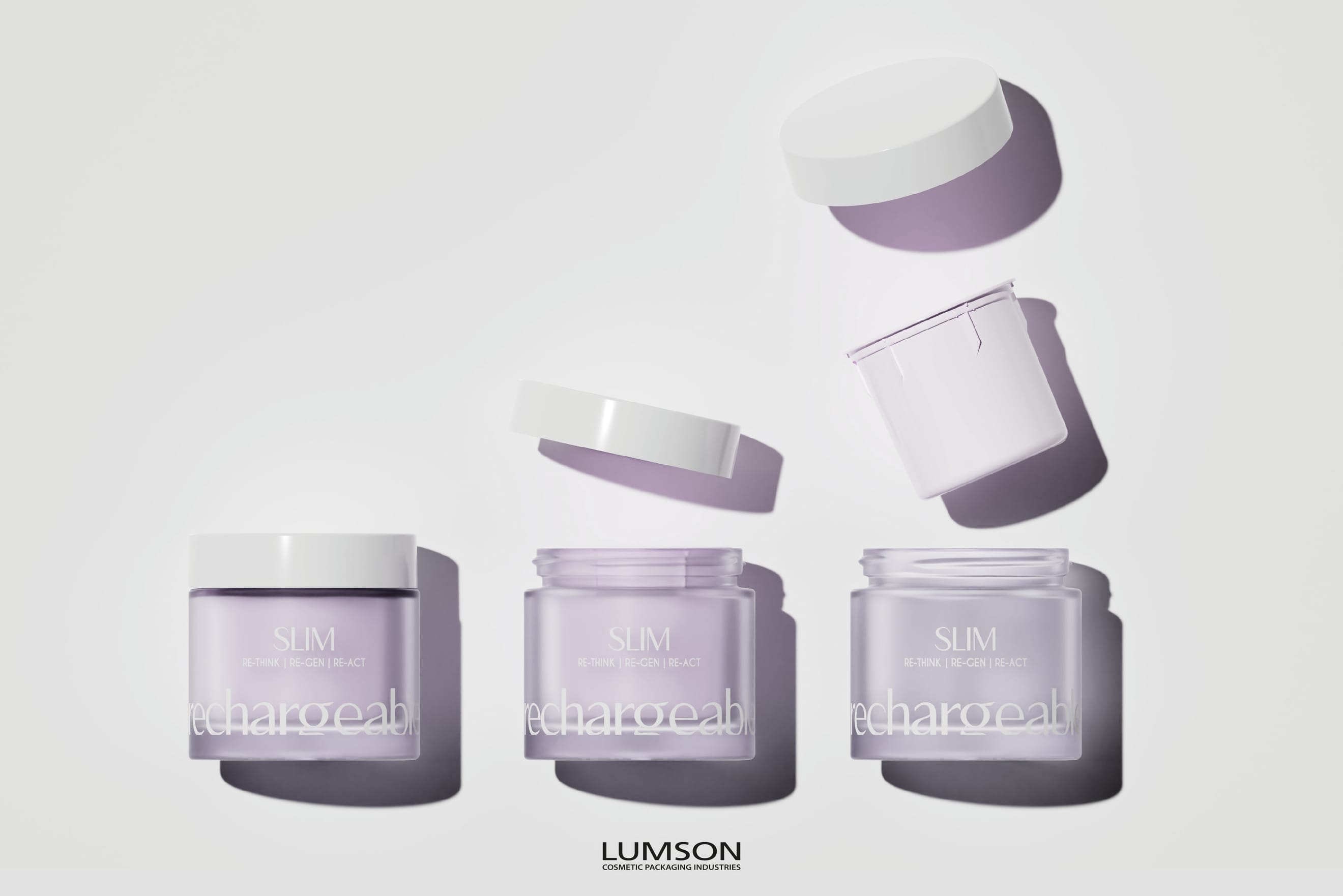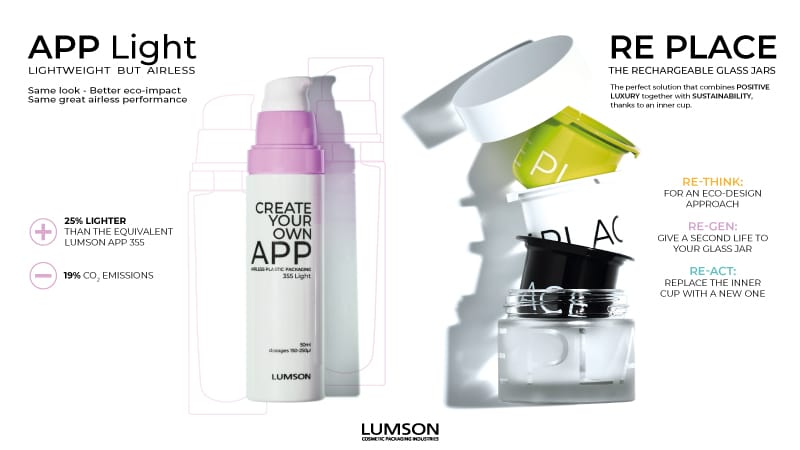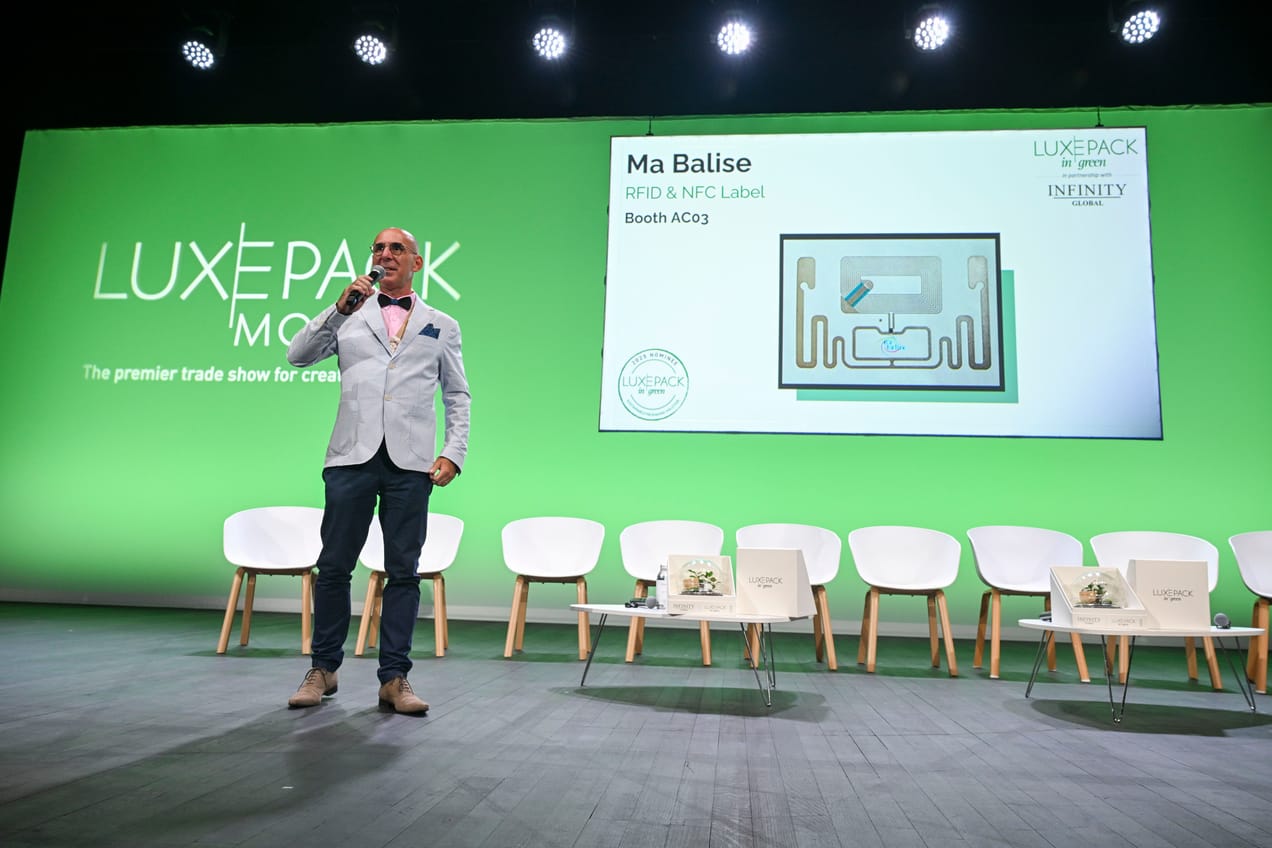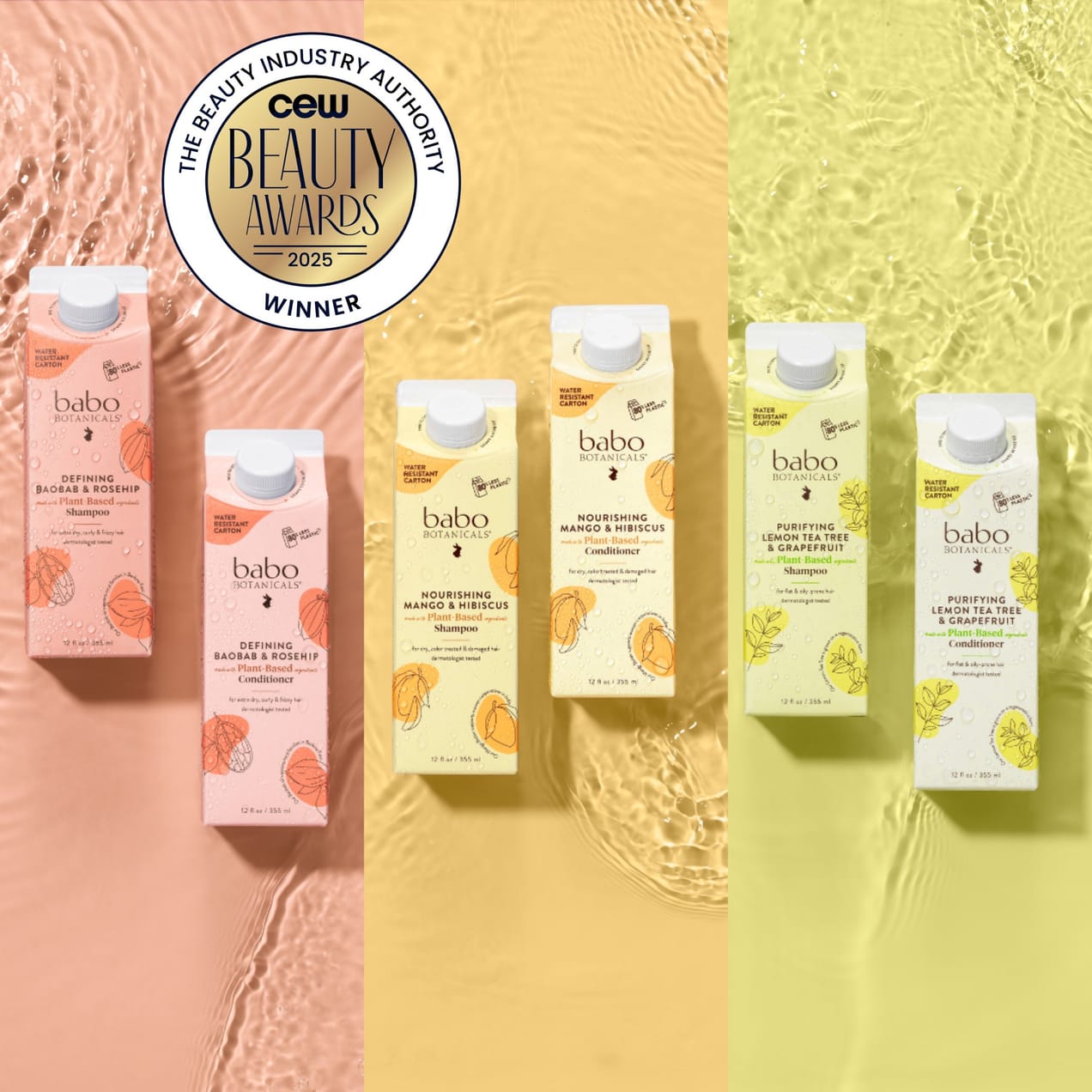
“Beauty companies will keep having to tackle the sustainability challenge”, says Matteo Carraro - Lumson
Italian cosmetics packaging leader Lumson is no stranger to sustainable innovations in its field. Recently, the manufacturer has released another innovative solution, officially presented at LuxePack Monaco 2024.
We spoke with Matteo Carraro, the company’s Innovation & Product Sustainability Manager, about challenges, future outlooks, and packaging design.
re/sources: What are the challenges of the 3R methodology (Reduction, Rechargeable, Recyclable) for sustainability?
In terms of reduction, I think that sometimes the challenge is to reduce the weight without compromising the quality perceived from the customer. For example, a lipstick cap could be considered “cheap” if it’s very light, or a glass jar/bottle without a thick bottom might not be associated with luxury. Similarly, the technical performances, such as in the couplings, are also important.
The rechargeable part is also quite challenging. Technically speaking, it is important to highlight that the recharge price plays a crucial role: if the price difference is minimal compared to the complete packaging, often the customer prefers to buy the complete packaging and not just the recharge. With proper engineering, though, the recharge can guarantee the same safety as the not-refillable packaging.

Recyclability is another key point, as more and more customers request recyclable packaging. In order to get it, it would be important to reduce the number of different materials used in packaging, aiming as much as possible for mono-material options. Recently, the European RecyClass and the American APR have been trying to align themselves in terms of testing methods, so that a European recyclability certification can be recognised in the US, and vice versa.
re/sources: What about PCR? What are its main challenges, and what are the differences between chemical and mechanical recycling?
There are several differences between chemical and mechanical recycling: first of all, the food grade feature. A chemically recycled polymer is always food-grade, whereas the same can’t be said of a mechanically recycled one (recently some food-grade, mechanically recycled PP has appeared on the market). Secondly, the performances: for a chemically recycled polymer, the aesthetics and mechanical properties are the same as the virgin polymer. And lastly, for a chemically recycled polymer, several recycling cycles can be performed without affecting any properties, whilst the quality of a mechanically recycled polymer worsens at each cycle. Currently, it is not easy in Europe to get a chemically recycled PP, despite the interest getting higher and higher.
re/sources: What are you most excited about in terms of packaging design/creativity?
I’m very curious and excited about the impact that artificial intelligence (AI) will have on the cosmetics packaging industry.
re/sources: How do you see the future of sustainability in our industry?
Sustainability is getting increasingly more important due to all the upcoming regulations, as well as customers’ sensitivity to it. The new generations, in particular, are very interested in the health of our planet and how they can act to help.
These are all hot topics on social media, but they are rapidly crossing through to the public opinion. Ultimately, this means that beauty companies will keep having to tackle the sustainability challenge, and come up with ideas and solutions to ensure more ethical and responsible products.

